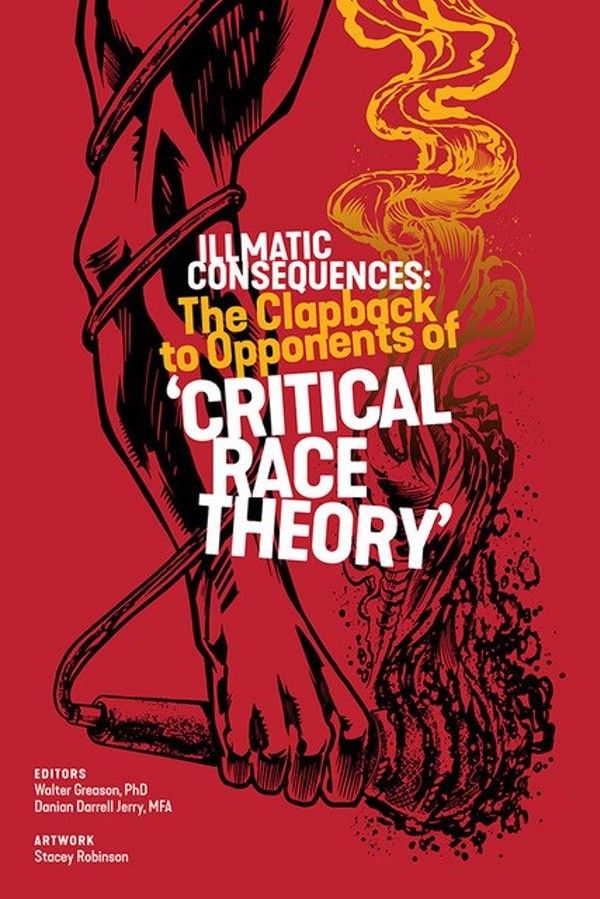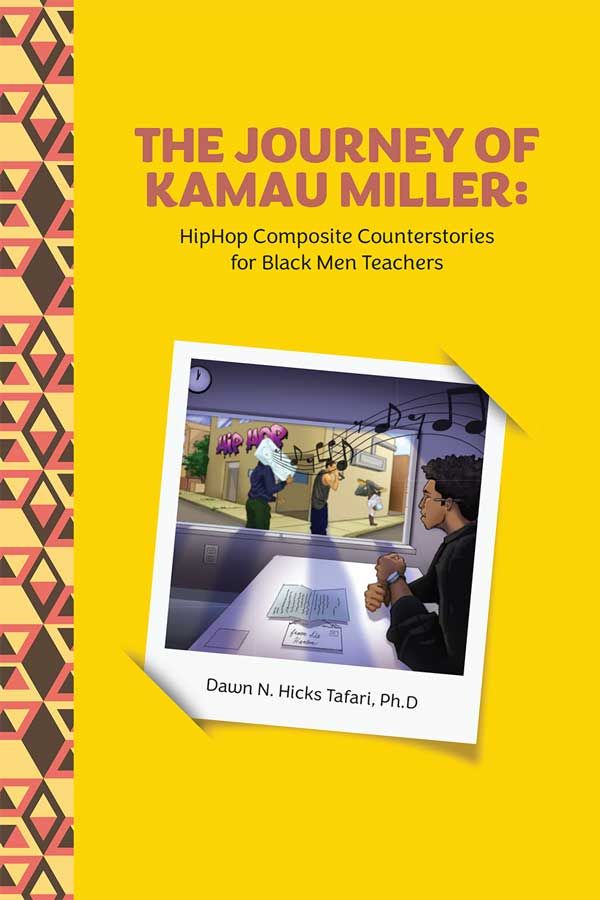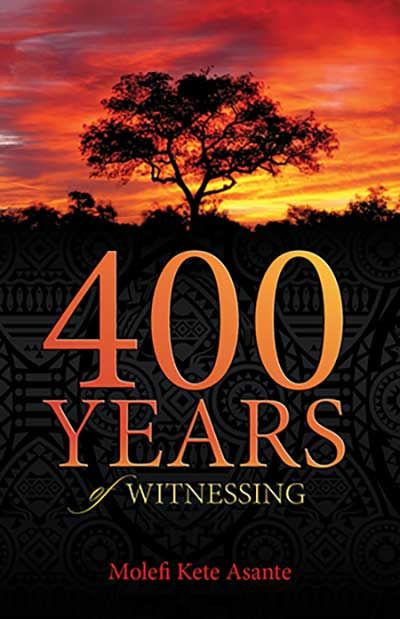P. Thandi Hicks Harper, Ph.D.

Frederick Douglass In The Era Of Hip-Hop: Rhetorical Symbolisms of Purpose, Power and Passion
Frederick Douglass In The Era Of Hip-Hop: Rhetorical Symbolisms of Purpose, Power and Passion
In September 2019, I was commissioned by the Frederick Douglass Memorial and Historical Association to lecture on the topic: Frederick Douglass in the Era of Hip-Hop. The lecture took place on September 19th at the Frederick Douglass Visitor’s Center in Washington, DC. The Frederick Douglass Visitor’s Center is located on the grounds where the honorable and noble statesman lived from 1874 until he died in 1895.
Prior to the lecture, I visited the Frederick Douglass House so that I could reap of his spiritual and rhetorical energy, putting me in position to best articulate his 19th century point of view to a 21st century audience. The audience of Millennials, Xennials and Generation Xers would more than likely be familiar with Hip-Hop culture than with the rhetorical genius, abolitionist, civic educator and former slave. I imagined, however, that the Silent Generation and Baby Boomer audience would be able to finish my sentences about the legend, and just might recognize familiar nuances in my Black oratorical style of social movement messaging. In any event, I was prepared to connect the two audiences.
I had the very important task to discuss Frederick Douglass and his legacy, and to maintain that significant elements continue to live in the era of Hip-Hop culture. My mission was to show that his fight for an inclusive American democracy aligns with a popular culture that I argue preserves the very rhetorical tenets that Douglass demonstrated and advocated for during his lifetime. For purposes of this essay, I operationally define rhetoric as the command and exhibition of carefully constructed and/or intuitive verbal, nonverbal, visual and/or spiritual language. Rhetoric is a tool used to influence, persuade and inform audiences for building a movement, consensus, and supporting a point of view.
My lecture began by addressing the African roots of Douglass and the era of Hip-Hop. It was important to show their connection of origin to indigenous African roots. African roots are embedded within what scholars describe as nine interrelated African-centered dimensions that manifest in Black life and culture.1 The African-centered dimensions include Spirituality, Harmony, Movement, Verve, Affect, Communalism, Expressive Individualism, Orality and Social Time Perspective. I align these dimensions with Hip-Hop culture in my 1993 dissertation.2 Asari Offiong and I further discuss them as Hip-Hop Root Elements in our 2020 book chapter entitled: “Hip-Hop Development: The Roots of Positive Youth Development and Engagement in Education and Health Prevention.”3 The connection of the African-centered dimensions to Black phenomena globally and across time speak to their inherent display from Douglass during his time and in the era of Hip-Hop. Each dimension is prominent in the rhetorical language of appeals (e.g., ethical, logical, emotional, agitational, shock appeals) used by Douglass’ and in the era of Hip-Hop.
This essay initially provides context and then associates the rhetorical symbolisms of purpose, power and passion to the times of Douglass and Hip-Hop. The essay addresses the life of Frederick Douglass and the era of Hip-Hop by comparing and contrasting their beginnings. I examine Hip-Hop artists and feature the leader of the group Public Enemy, Carlton Douglas Ridenhour, also known as Chuck D, as 20th and 21st century abolitionists alongside the Douglass’ abolitionist movement in the 19th century. The rhetoric exemplified in Hip-Hop song titles and interpreted as slave narratives is also presented. The essay ends with my thoughts pertinent to the role that African-centered dimensions play in shaping impactful Black oratorical and Hip- Hop rhetoric. I conclude with the importance of reinforcing the wisdoms and rhetorical traditions of Frederick Douglass congruent with the use of Hip-Hop as a rhetorical tool to inform and better the lives of Blacks throughout the diaspora.
Frederick Douglass and the Era of Hip-Hop Culture
Hip-Hop and the life and legacy of Frederick Douglass are deeply rooted in American History. Douglass was engaged in civic education, civil liberty, reconstruction, and equal justice advocacy for all people. He was particularly focused on changing the dismal lives of Black Americans as a result of his witnessing the brutal realities from slavery to freedom. Douglass experienced the injustice of excluding Black Americans from the freedoms expressed in the Constitution, and he fought without ceasing for Blacks to unequivocally embody the “we” in We the People. The irony is that the era of Hip-Hop has a timespan dating back to August 11, 1973, until the present day. The Hip-Hop culture emerged practically two centuries later and in the same month of the signing of our country’s declaration of freedom: August 2, 1776.
The parallel between the evolution of Hip-Hop and Frederick Douglass’ abolitionist movement, and the evolution of American democracy is a Call to Action for justice and freedom. The call to action is now more critical than ever, as 2020 is an American presidential election year. The action is already inclusive of (just as it was during the times of Douglass and into the 21st Century for Hip-Hop) rhetoric displaying African-centered traditions that showcase spirituality, harmony, movement, verve, affect, communalism, expressive individualism, orality and a focus on the social realities of the time. These dimensions are powerful rhetorical assets that lend to the successful delivery of rhetoric.
Hip-Hop is the most influential popular culture worldwide. The Godfather of Hip-Hop and leader of the African Zulu Nation, Afrika Bambaataa, is credited for naming the culture Hip- Hop.4 It is a complex and layered cultural phenomenon that was born in the South Bronx, New York. Hip-Hop was started by urban Black and Latinx youth that were marginalized and lacking equity and resources in their community. Over the years, the culture has reached children, youth and adults across racial, ethnic, sexuality, political and economic boundaries. What began as an American youth culture is now a global culture that unites generations of diverse individuals unlike any other popular culture in world history.
The era of Hip-Hop has highlighted contemporary and traditional arts/elements and principles to prompt a call for freedom, rights, and privileges guaranteed to all by the Constitution of the United States of America. Deejaying, emceeing, b-boying and b-girling (breakdancing), graffiti, fashion and knowledge of self are the original Hip-Hop arts/elements and peace, love, unity, and having fun are the culture’s founding principles – each of which serve as rhetorical assets lending to the delivery of rhetoric. The arts/elements and principles are rhetorical mediums that reach out and touch the senses of audiences. Emceeing (speaking graffiti (writing) and knowledge-of-self reign highest within the legacy of Frederick Douglass; and the Hip-Hop arts/elements have a direct alignment to the orality, expressive individualism, spirituality and affect African-centered dimensions. The tools make for effective communication and are rhetorical symbolisms of purpose, power and passion.
PURPOSE: Beginnings…Then and Now
Beginnings in the life of Frederick Douglass and Hip-Hop led to their purpose-driven rhetoric. Similarities exist between the origins of both. Douglass’ beginning was enslavement. He was born into slavery and lived on a plantation where he slept on dirt and clay floors that were cold and wet during winter months. Douglass lived in poverty and he and other slave families only had what was provided by their masters. Two shirts a year and one pair of trousers were the norm for adults, and shoes nor trousers were options for slave children. Douglass was often hungry, and the songs of slaves were prayers to God for “deliverance from chains.”5 Frederick Douglass was plagued by environmental and social injustices, void of natural and legal rights for Black Americans. His beginnings (much of which never ended during his lifetime) tell the story of daily oppression, brutal whippings, and racial discrimination.
Hip-Hop emerged in comparable blight conditions. The lives of Black and Latinx youth mirrored Frederick Douglass’ reality in many ways. Poverty, the marginalization of Black folks, white supremacy, Black nihilism, high unemployment rates, gang violence, substance abuse, lack of educational resources, brutal whippings by oppressors, and the depletion of social services existed. Youth cried out because they wanted the country to acknowledge and rescue them from injustices and lack of freedom – just as slaves did during the times of Frederick Douglass. Marginalized young people wanted relief from what could very easily be argued as 20th and 21st century slavery, including:
- Excessive dependence on what and whom they could not control,
- Restricted freedom and allowance, and the
- Lack of positive recognition, love, and appreciation.
Like Douglass during his time, Hip-Hop youth felt anguish, anxiety, and agony because of their condition. The slavery condition tormented Douglass to the point where he would wish himself dead and regretting his own existence. The same thought crossed the minds of many during Hip-Hop’s beginnings. A reoccurring message during both epochs is captured in the rhetorical and metaphorical truths evident in the lyrics of the 1982 anthem rap song by Grand Master Flash and the Furious Five called The Message.
|
Don’t push me, ‘cause I’m close to the edge… I’m trying not to lose my head. |
Many Black Americans during these times were, in the language of voting rights forerunner and civil rights icon Fannie Lou Hamer, sick and tired of being sick and tired. Hip- Hop arts/elements and principles were used as therapy and reprieve from the conditions – like rhetorical medicines with affect dosages of positivity and hope. Similarly, the art of song and spirituality were used for the same purpose during slavery. These rhetorical tools stay best sellers in the midst of the ongoing battle for eternal justice, equity, and impartiality for Black Americans today. The beginnings, then and now, called Frederick Douglass and the Hip-Hop generation to action. Their purpose was clear, as was the belief that they had the power to influence change.
POWER: Abolitionists…Then & Now
There is power in the judicious, however uncompromising, use of language by the abolitionist. A true abolitionist has, in the rhetorical language of Malcolm X, a by any means necessary fighting spirit. In her 2019 book, Bettina Love reminds us that “to begin the work of abolitionist teaching and fighting for justice, the idea of mattering is essential in that you must matter enough to yourself, to your students [people] and to your students’ [peoples’] community to fight.”6 Frederick Douglass and American Hip-Hop icon Chuck D represent abolitionists then and now.
I chose to focus on Chuck D because of his iconic mainstay in Hip-Hop education and redefining of Hip-Hop messaging with a civil purpose. Public Enemy’s reign as rhetorical masters targeting Black Americans with abolitionist teachings (particularly the late 1980s and 1990s) is also my reason for highlighting the group’s leader.
Douglass and Chuck D show prominence as skilled orators, writers, respected thought leaders, leading spokespersons for racial equality, and wanting better lives for Black Americans. This prominence is a reflection of their rhetorical typography. As abolitionists, the two had a clear message to, in the words of Chuck D and his rap group Public Enemy, Fight the Powers That Be. Their favor has always been the eradication of practices that perpetuate civil inequality. The African-centered dimensions breathe heavily here as Douglass and Chuck D represent the epitome of meaningful spirituality, harmony, orality, verve and expressive individualism. Communalism has always resonated in their presence as large audiences have revered their carefully crafted and informed talks/speeches and lyrical musical presentations – all of which glean Black oratorical and rhetorical traditions.
Chuck D’s narrative in the Public Enemy song Can’t Truss It further makes the point of Frederick Douglass’ legacy in the era of Hip-Hop. The rap song, used as a rhetorical artistic expression, speaks to how today’s corporations practice principles of slavery towards Black workers. Involuntary and unexplainable labor requests, lack of equal pay, sexual harassment, and the presence of fear, aggression and intimidation factors are highlighted in the Can’t Truss It lyrics and music video. Frederick Douglass “rapped” about some of these same inequities using his eloquent oratory expressions and art of a statesman delivery.
Abolitionists focus on ending policies and practices that are not in the best interest of all people and that exclude – in this case – Black Americans. Chuck D, as did Frederick Douglass, always catered to the social, cultural, and political interests of Black people in his rhetoric. In his 1997 book Fight the Power, Chuck D reiterates that Rap music is Black America’s CNN. “Every time we checked for ourselves on the news, they were locking us up anyway, so the interpretation coming from Rap was a lot clearer. That’s why I call Rap the Black CNN.”7 Hip- Hop presents American politics, social reform, education and other related topics from a perspective and view that represents Black American lifestyles and concerns was his point. One could argue that in Frederick Douglass’ day, he was Black America’s CNN. His July 5, 1852, speech, The Meaning of July Fourth for the Negro was filled with rhetorical assets, and the invitation to speak provides an example of him recognizing his role in representing the sentiments of Black Americans.
|
Fellow-citizens, pardon me, allow me to ask, why am I called upon to speak here to-day? What have I, or those I represent, to do with your national independence? Are the great principles of political freedom and of natural justice, embodied in that Declaration of Independence, extended to us? and am I, therefore, called upon to bring our humble offering to the national altar, and to confess the benefits and express devout gratitude for the blessings resulting from your independence to us?............ But such is not the state of the case. I say it with a sad sense of the disparity between us. I am not included within the pale of this glorious anniversary! Your high independence only reveals the immeasurable distance between us.8 |
Optimism was Douglass’ character; and he always spoke truth to power. He acknowledged America’s Founding Fathers for their promises to life, liberty and the pursuit of happiness, however, in this same speech he questions the application of political freedom and natural justice principles to the lives of Black Americans as if he was reporting and questioning the news. Douglass rapped all of his speeches with passion and in honest truth. His legacy continues in the era of Hip-Hop as Chuck D, called the “Forefather of Hip-Hop,” and other socially, culturally and politically conscious Hip-Hop artists (e.g., Common, KRS-One, Queen Latifah, Kendrick Lamar, TI, Killer Mike, Meek Mill, Rhapsody, J. Cole) continue to rhetorically communicate with passion. Raps, music videos, speeches, interviews, concerts, books, social media posts, documentaries/films, panel discussions and keynote presentations are their communication mediums for rhetorical messaging.
PASSION: Slave Narratives…Then & Now
The narratives told during the times of Frederick Douglass and within the era of Hip-Hop are replete with prose and metaphors that passionately speak to, in the language of W. E. B. Du Bois’ book title, The Souls of Black Folks.9 Irvin Weatherby’s 2015 article: The Education of Hip-Hop, notes that many song titles in Hip-Hop read like the titles of slave narratives.10 He cites Hip-Hop artist, producer and businessman Shawn C. Carter (also known as Jay-Z) and his three related albums including: In my Lifetime Volume 1, Hard Knock Life Volume 2, and Life and Times of S. Carter. The following chart highlights other Hip-Hop song titles that have lyrical narratives resembling the tenets exemplified in Douglass’ rhetorical chronicles.
|
Hip-Hop Song Title |
Album |
Artists |
Year |
F. Douglass (FD) Connection |
|
Sojourner |
Eve |
Rapsody, J. Cole |
2019 |
Both advocate for women’s rights & pay tribute to black women in history. |
|
Pray For Me |
Black Panther: The Album |
Kendrick Lamar, The Weekend |
2018 |
FD’s “no time to fight with only your white hand & allow your black hand to remain tied.” match the language in this song. |
|
|
Black America Again |
Common, Bilal |
2016 |
Both speak about the13th [Amendment] & institutions that impact Black & Brown Americans. |
|
New National Anthem |
Paperwork: The Motion Picture |
T.I., Skylar Grey |
2014 |
Both emphasize the capabilities & importance of Black Americans to help themselves (particularly when there is “eternal justice”) & not waiting on others. |
|
Liberation |
Aquemini |
Outkast, Big Rube, Erykah Badu, CeeLo Green |
1998 |
Both address the impact of playing into an oppressive system, freedom & Black collaboration. |
Hip-Hop song titles whose lyrics may not directly connect to the overt mission of Frederick Douglass, however, still resonate as slave narratives, include:
- Dangerous by Meek Mill,
- Surviving the Times by Nas and Nipsey Hussle, and
- Everyday Struggle by The Notorious B.I.G.
The themes in Frederick Douglass’ speeches and written narratives are oftentimes manifested in the lyrics and music videos of the aforementioned Hip-Hop songs. One can feel the passion emanating from the rhetorical appeals set to ignite an emotion.
Final Thoughts
Hip-Hop artists’ that exude politically, culturally, and/or socially conscious rhetoric repeatedly connote that 400 years after the trans-Atlantic slave trade, 244 years after the signing of the Declaration of Independence, and 232 years after the ratification of the Constitution of the United States, marginalized Black Americans still live in slave conditions. They reiterate the same realities that Frederick Douglass denounced during his lifetime. Hip-Hop illuminates’ ways that the purpose, power, and passions of Frederick Douglass remain alive and relevant today.
Hip-Hip, in its politically, culturally and socially conscious mode, is enduring the work of Douglass. The culture has taken on the challenge because many of the most unfortunate issues facing Black Americans today continue to happen; i.e., the stories of George Floyd, Breonna Taylor, Rodney King, Trayvon Martin, Eric Gardner, Michael Brown, Sandra Bland, Freddie Gray and Tamir Rice. Hip-Hop’s arts/elements, principles, and African-centered dimensions are rhetorical tools that help in effectively mainstreaming the importance of political and social reform, activism, and civic engagement for Black civil equality. The 19th century culture of Frederick Douglass and Hip-Hop culture’s 20th and 21st century timeline coexist in American society through the styles and mediums of rhetoric that are based in Hip-Hop Roots. The gift of rhetorical skills is an anointing. Frederick Douglass was anointed and so is Hip-Hop culture. It is important that we take advantage of their gifts by reinforcing the wisdoms and rhetorical traditions of Frederick Douglass congruent with the use of Hip-Hop as a rhetorical tool to inform and ultimately better the lives of Blacks worldwide.
References
1 Wade A. Boykin, “The Academic Performance of Afro-American Children,” in Achievement and Achievement Motives, ed. J. Spence, (San Francisco, CA: W. H. Freeman, 1983), 344-346.
2 Patricia Thandi Hicks Harper, “Black Educators, Black Elementary School Students, and Black Rap Music Artists on Educational Entertainment Rap Music Video for Pedagogy: A Cultural and Critical Analysis,” (PhD Dissertation. University of Maryland, 1993), ProQuest Doc. #2195599224
3 For a detailed description of the dimensions in relationship to Hip-Hop teachings see Patricia Thandi Hicks Harper and Asari A. Offiong, “Hip-Hop Development: The Roots of Positive Youth Development and Engagement in Education and Health Prevention,” in #HipHopEd: The Compilation on Hip-Hop Education, Volume 2, ed. Edmund Adjapong and Ian Levy (New York, NY: Peter Lang Publishers, 2020), 69-82.
4 Afrika Bambaataa, interview by P. Thandi Hicks Harper, tape recording, 16 November 1992, Bronx River Projects, Bronx, NY.
5 Frederick Douglass, Narrative of the Life of Frederick Douglass, An American Slave: Annotated Bicentennial Edition (Atlanta, GA: Frederick Douglass Family Initiatives, 2017), 21. 60-82
6 Bettina L. Love, We Want to Do More Than Survive: Abolitionist Teaching and the Pursuit of Educational Freedom (Boston, MA: Beacon Press, 2019), 2.
7 Chuck D, Fight the Power: Rap, Race, and Reality (New York: NY: Delacorte Press, Bantam Doubleday Dell Publishing Group, 1997), 256.
8 Frederick Douglass, “What to the Slave is the Fourth of July?” Anti-Slavery Society, Rochester, NY, 5 July, 1852. www.redandgreen.org/July_5th_Speech.htm
9 William Edward Burghardt DuBois, The Souls of Black Folk (Chicago, ILL: A.C. McClung & Co, 1903).
10 Irvin Weathersby, “The Education of Hip-Hop,” The Atlantic,
https://www.theatlantic.com/education/archive/2015/03/the-education-of-hip-hop/388223
Bibliography
Bambaataa, Afrika. Interview by P. Thandi Hicks Harper. Tape recording, 16 November 1992, Bronx River Projects, Bronx, NY.
Boykin, Wade A. “The Academic Performance of Afro-American Children.” In Achievement and Achievement Motives, edited by J. Spence, 324-371. San Francisco, CA: W. H. Freeman, 1983.
D, Chuck. “Fight the Power: Rap, Race, and Reality. New York, NY: Delacorte Press, Bantam Doubleday Dell Publishing Group, 1997.
Douglass, Frederick. “What to the Slave is the Fourth of July?” Anti-Slavery Society. Rochester, NY, 5 July 1852. www.redandgreen.org/July_5th_Speech.htm
Douglass, Frederick. Narrative of the Life of Frederick Douglass, An American Slave: Annotated Bicentennial Edition. Atlanta, GA: Frederick Douglass Family Initiatives, 2017.
DuBois, William Edward B. The Souls of Black Folk. Chicago, ILL: A.C. McClung & Co, 1903.
Hicks Harper, P. Thandi, and Asari A. Offiong. “Hip-Hop Development: The Roots of Positive Youth Development and Engagement in Education and Health Prevention.” In #HipHopEd: The Compilation on Hip-hop Education, Volume 2, edited by Edmund Adjapong and Ian Levy, 60-82. New York, NY: Peter Lang Publishers, 2020.
Hicks Harper, P. Thandi. “Black Educators, Black Elementary School Students, and Black Rap Music Artists on Educational Entertainment Rap Music Video for Pedagogy: A Cultural and Critical Analysis.” PhD Dissertation. University of Maryland, 1993. ProQuest Doc. #2195599224
Love, Bettina L. We Want to Do More Than Survive: Abolitionist Teaching and the Pursuit of Educational Freedom. Boston, MA: Beacon Press, 2019.
Weathersby, Irvin. “The Education of Hip-Hop.” The Atlantic. ttps://www.theatlantic.com/education/archive/2015/03/the-education-of-hip-hop/388223
Disclaimer:
Article Tags
Related Title/s
P. Thandi Hicks Harper, Ph.D.




